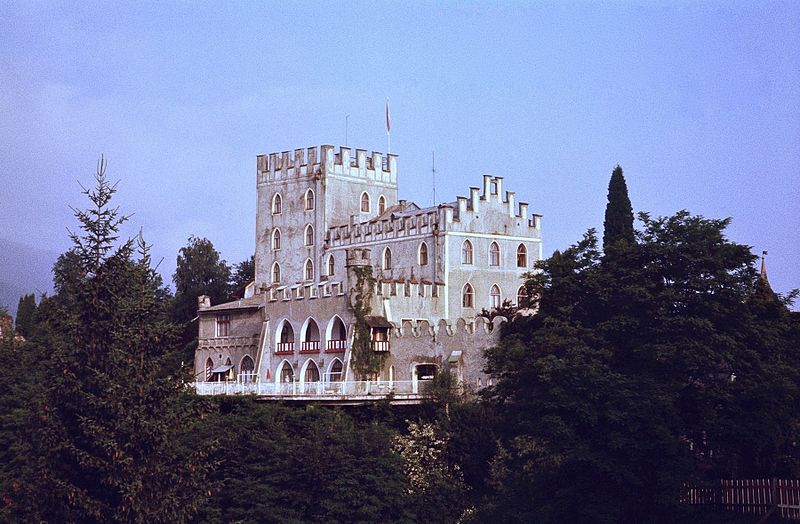Unlikely Allies

Even if you don’t know much about World War II, you probably know that the United States and Germany were on opposing sides. And with very little exception, you’d be right.
But the waning days of the war proved that even this assumption was once wrong.
If you travel to Austria today, you may end up seeing a small castle, pictured above, dating back to at least the year 1240. The building, known as Castle Itter, is just south of the German border (here’s a map). After Germany annexed Austria prior to the beginning of the war, the Nazi regime leased the castle from its owner, and in 1943, the Nazis seized it outright. Shortly thereafter, the German military converted the castle into a prison for about a dozen high-profile French prisoners, including Charles de Gaulle’s sister, two former French military leaders, and two former French prime ministers. As the tide of the war turned, the castle was commonly used as a stopping point for Germans fleeing from the east on their way back to Germany.
The prisoners’ freedom seemed likely when on April 30, 1945, Adolf Hitler took his own life. Four days later, the commanding officer of the castle fled and his soldiers followed shortly thereafter. The prisoners knew, however, that they were hardly free; the area was still under German military control, and many other (fleeing) soldiers would still seek shelter at the castle. Instead of making a run for it, the prisoners collected the arms that were left behind and resolved to defend themselves when the SS troops returned to re-take the castle — the hope was that a liberation force would arrive in time. In order of increasing those odds, a Yugoslavian prisoner named Zoonimir Cuckovic — an electrician re-assigned from Dachau to assist in the castle’s repairs — risked re-capture (if not, more likely, death) and set out beyond the castle’s walls to find help.
What they found were two things: Germans and Americans. The latter was welcome — but so was the former. The German commander Major Josepf Gangl had already been convinced that his country was going to lose — over the few weeks before Hitler’s suicide, Gangl and his troops were already assisting the Austrian resistance against Hitler’s forces. When the Castle Itter prisoner found Gangl, Gangl decided to move his unit to the castle, with the express intent of freeing the prisoners by surrendering to the Americans. Gangl’s group met up with a small American tank unit led by Lieutenant Jack Lee, whom they welcomed into the castle. The German-seized Austrian castle housing French prisoners was now under American control thanks in part to a Yugoslavian electrician who came across a friendly German military unit.
On May 5, 1945, Gangl’s country mates made it clear that the Major did not speak for his nation.
A SS unit opened fire on the castle, first with machine guns and later with anti-tank weaponry. The joint U.S.-German forces (with support from the French captives) struggled to hold the castle, and, as HistoryNet notes, the Nazi loyalists seemed poised for victory. As a last-ditch effort before the SS brigade was able to retake the castle, French tennis star Jean Borotra, one of the people formerly held prisoner by the Nazis at the castle, volunteered to run to the nearby village in hopes of directing reinforcements. Borotra’s run was successful — American reinforcements arrived just before the Nazis made their assault on the castle’s front gate. The SS troops fled, and the Americans — for the first and only time in World War II, assisted by German soldiers — won the Battle for Castle Itter.
Bonus Fact: Many medieval castles feature spiral staircases which, from the point of view of someone going up the staircase, run clockwise. Why? As Wikipedia explains, the design makes it difficult on would-be attackers. Assuming the attackers were right-handed (as most people are), they’d be at a distinct disadvantage. Their swords would be positioned on the inside of the stairs and, therefore, blocked by the central pillar of the staircase.
From the Archives: Wonderland on Ice: A castle in China which didn’t quite get finished.
Related: “The Last Battle: When U.S. and German Soldiers Joined Forces in the Waning Hours of World War II in Europe” by Stephen Harding, a book about the Battle for Castle Ister. 4.1 stars on 300 reviews.
